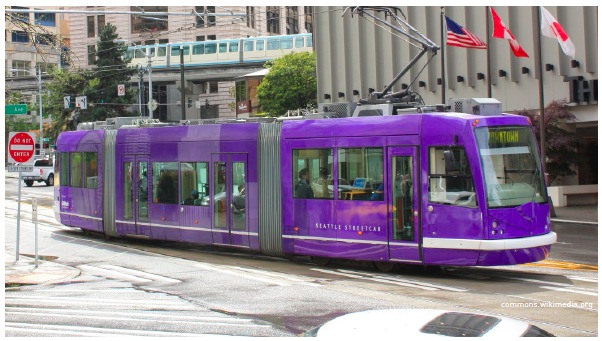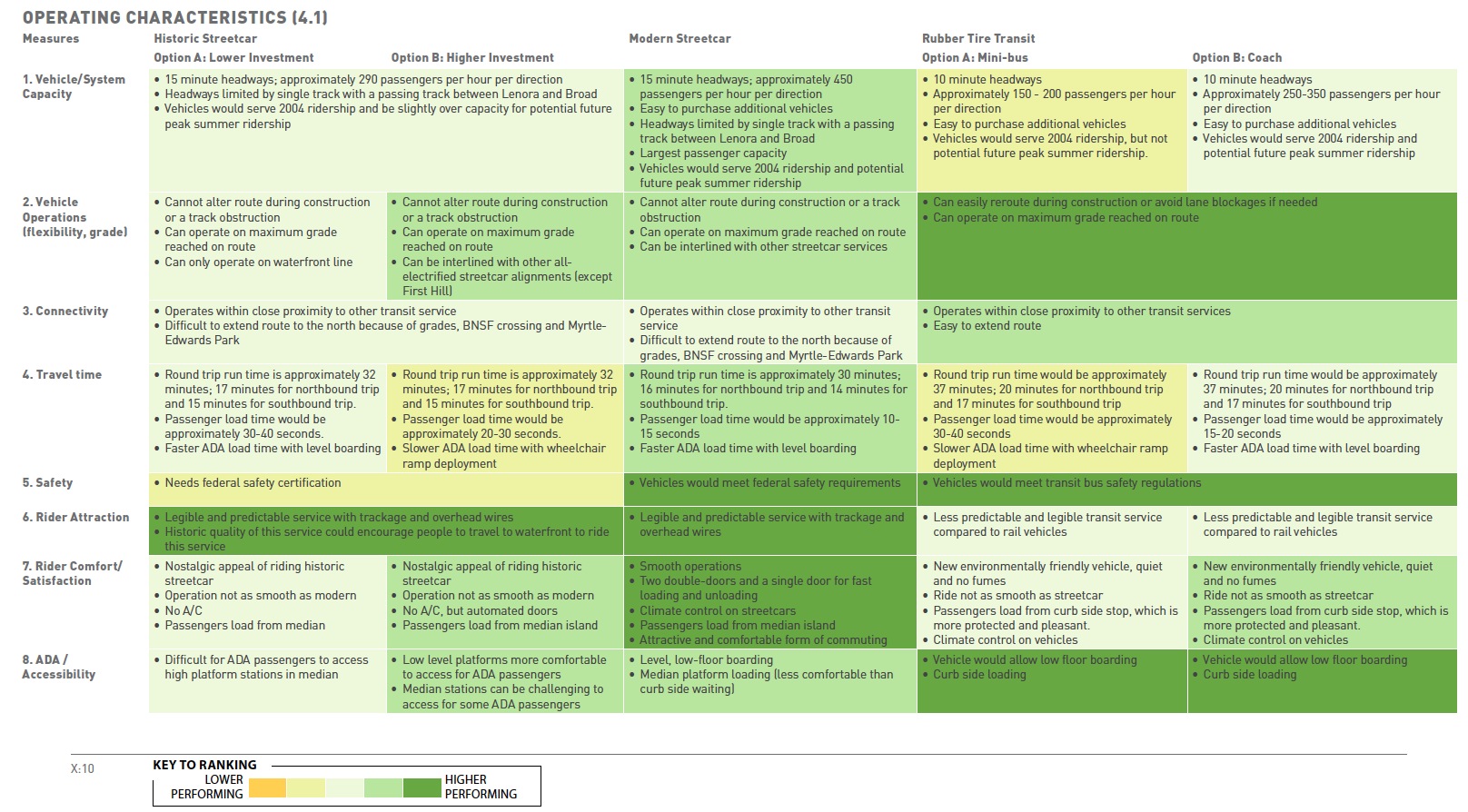WATERFRONT SEATTLE
1.0 EXECUTIVE SUMMARY
 A key part of the Waterfront Seattle project access and mobility objective is the addition of a waterfront transit service. The purpose of this service is to connect a variety of community destinations along the nearly 2-mile long waterfront that could not be reached on foot alone. Riders of this service would be primarily recreational visitors and local waterfront employees and residents. The transit service would be frequent, easy to use and would extend from the Olympic Sculpture Park to Pioneer Square to allow for efficient movement along the waterfront.
A key part of the Waterfront Seattle project access and mobility objective is the addition of a waterfront transit service. The purpose of this service is to connect a variety of community destinations along the nearly 2-mile long waterfront that could not be reached on foot alone. Riders of this service would be primarily recreational visitors and local waterfront employees and residents. The transit service would be frequent, easy to use and would extend from the Olympic Sculpture Park to Pioneer Square to allow for efficient movement along the waterfront.
The waterfront transit service would interact with improved east-west pedestrian connections to the waterfront. Other transit improvements serving the waterfront include the Madison Street rapid trolley bus route connecting Colman Dock to First Hill and beyond, the new First Hill streetcar line which will terminate near 1st Avenue and Jackson Street, and a possible City Center Streetcar line on 1st Avenue.
Colman Dock is also an important connection along the waterfront. Washington State Ferries plans to replace much of the dock structure and the passenger terminal building between 2015 and 2020. Both the larger vehicle ferries and passenger-only ferries will continue to arrive and depart from Colman Dock. Safe, pleasant and convenient pedestrian access from Colman Dock to nearby transit service on Alaskan Way, 1st Avenue and Madison, Marion and Columbia Streets will be provided through new sidewalks, crosswalks and a wider Marion Street pedestrian bridge.
This study evaluates and compares historic streetcars, modern streetcars, and rubber tire transit for operating characteristics, effects on the environment, and cost. These transit options will focus on moving people along the waterfront; characteristics include high frequency operations, ease of passenger boarding, and connections to other major transit modes.
Historic Streetcar
The historic streetcar alternative would reinstate the George Benson trolleys, which previously operated along the Seattle waterfront. There are two options being considered for this alternative:
- Option A is a lower level of investment including minor modifications such as doors on both sides of the vehicle and a modern PA system. There would be no change to the high-floor stations and passenger loading. The waterfront streetcar would not be integrated with the rest of the streetcar system. A streetcar maintenance facility would be located on the waterfront in this option
- Option B includes the elements in option A and adds elective upgrades such as automated door operation, conversion to operate on similar power service as the modern streetcar, and wheelchair lifts so station platforms can be at street level (instead of the high platforms with option A). The step up entry would be reinstated for this option. The streetcar maintenance facility could be located on the waterfront or in other locations where access is provided by the streetcar system.
Modern Streetcar
The modern streetcar alternative examines constructing a streetcar alignment along the waterfront that is similar to the existing South Lake Union Streetcar and proposed First Hill Streetcar services. Only one option was considered for this alternative.
Rubber Tire Transit
The rubber tire transit alternative evaluates implementing a mini-bus style service (option A) similar to Quebec City’s Ecolobus service and a larger bus coach similar to King County Metro’s 40-foot buses (option B). The rubber tire vehicles analyzed in this report serve as examples of possible vehicle types and would potentially not be the exact vehicles selected for rubber tire transit.
- The option A vehicle would be a smaller mini-bus style vehicle with large side windows and exterior row seating. It would provide low floor boarding similar to the Tecnobus Gulliver bus operating in Quebec City. This vehicle would be powered by a battery electric system with zero emissions.
- Option B would be a coach style bus with front and back door loading and unloading, similar to coaches operated by King County Metro. This vehicle could use diesel-hybrid or electric propulsion. The Proterra bus assumed for the evaluation is a battery-powered electric bus with a rapid charge system at a terminus station.
SUMMARY RESULTS
(click to enlarge)
Download full report (PDF): Local Waterfront Transit
About Waterfront Seattle
waterfrontseattle.org
“Waterfront Seattle is a partnership between the City of Seattle and the entire community to create an inviting new public waterfront that is a place for everyone – a Waterfront for All that the entire region can enjoy for generations.”
Tags: Seattle, Streetcar, WA, Washington







 RSS Feed
RSS Feed